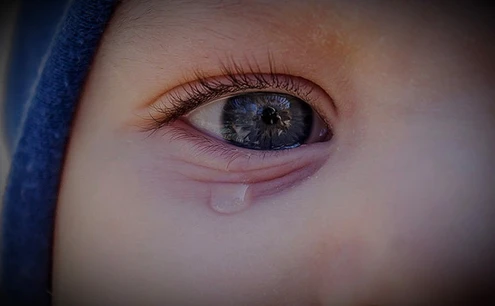The upper eyelid droops over the eye, partially or fully covering the pupil.
It can be congenital (present at birth) or acquired.
The eyelid turns inward, causing the eyelashes to rub against the cornea.
Leads to irritation, redness, and potential corneal damage.
The eyelid turns outward, exposing the inner surface.
Causes dryness, tearing, and irritation due to improper eyelid function.
A vertical fold of skin near the inner corner of the eye.
Common in Asian populations, it may give the appearance of crossed eyes (pseudo-strabismus).
Includes benign (e.g., hemangiomas, dermoid cysts) or malignant growths on the eyelid.
Drooping or asymmetry of the eyelid (common in ptosis).
Redness and irritation (seen in entropion or ectropion).
Excessive tearing or dryness due to improper eyelid position.
Visible mass or swelling in cases of tumors or cysts.
Vision problems, especially when the disorder obstructs the pupil.
Genetic factors or developmental abnormalities during pregnancy.
Example: Congenital ptosis caused by underdeveloped eyelid muscles.
Damage to the eyelid or surrounding tissues due to accidents.
Conditions such as blepharitis or chalazion can lead to structural changes.
Benign or malignant masses that alter the eyelid's appearance and function.
Physical Examination: Evaluates the eyelid's position, shape, and movement.
Vision Tests: Assesses the impact of the disorder on vision.
Imaging Studies: Ultrasound or MRI can identify tumors or cysts.
Ptosis Repair: Strengthening or repositioning the eyelid muscles.
Entropion/Ectropion Correction: Restores the eyelid to its normal position.
Tumor Removal: Surgical excision of masses for cosmetic and functional restoration.
Eye drops or ointments for dryness, irritation, or infection.
Steroid injections for specific conditions like hemangiomas.
Patching Therapy: For amblyopia (lazy eye) caused by ptosis.
Artificial Tears: To alleviate dryness due to ectropion.
Regularly monitor your child’s eyelid appearance and function.
Seek medical attention for any abnormalities, such as drooping, redness, or swelling.
Adhere to the prescribed treatment plan and attend follow-up visits.
Provide emotional support, particularly if surgery is needed.
Turkey offers world-class medical facilities for treating pediatric eyelid disorders at competitive costs.
Expert Ophthalmologists: Highly skilled specialists in pediatric eyelid disorders.
Advanced Technology: Hospitals equipped with modern diagnostic and surgical tools.
Affordable Care: Lower treatment costs compared to many Western countries.
Comprehensive Services: From diagnosis to post-treatment care, all-inclusive options.
Surgical Treatments: Ptosis repair, entropion/ectropion correction, and tumor removal.
Medical Therapies: Customized eye drops, ointments, or steroid injections.
Non-Surgical Options: Patching therapy and artificial tear treatments..
Research and select a reputable hospital or clinic in Turkey.
Consult a specialist to discuss the most suitable treatment plan.
Plan for a stay of 1-2 weeks to accommodate surgery and follow-up appointments.
Check if your insurance covers international treatments or inquire about payment plans.
Eyelid structural disorders in children are treatable conditions that require timely intervention to prevent complications like vision impairment. Whether seeking treatment locally or considering Turkey for its advanced care and affordability, consulting a qualified ophthalmologist is crucial. With appropriate care, children with eyelid disorders can achieve better eye health and appearance.
